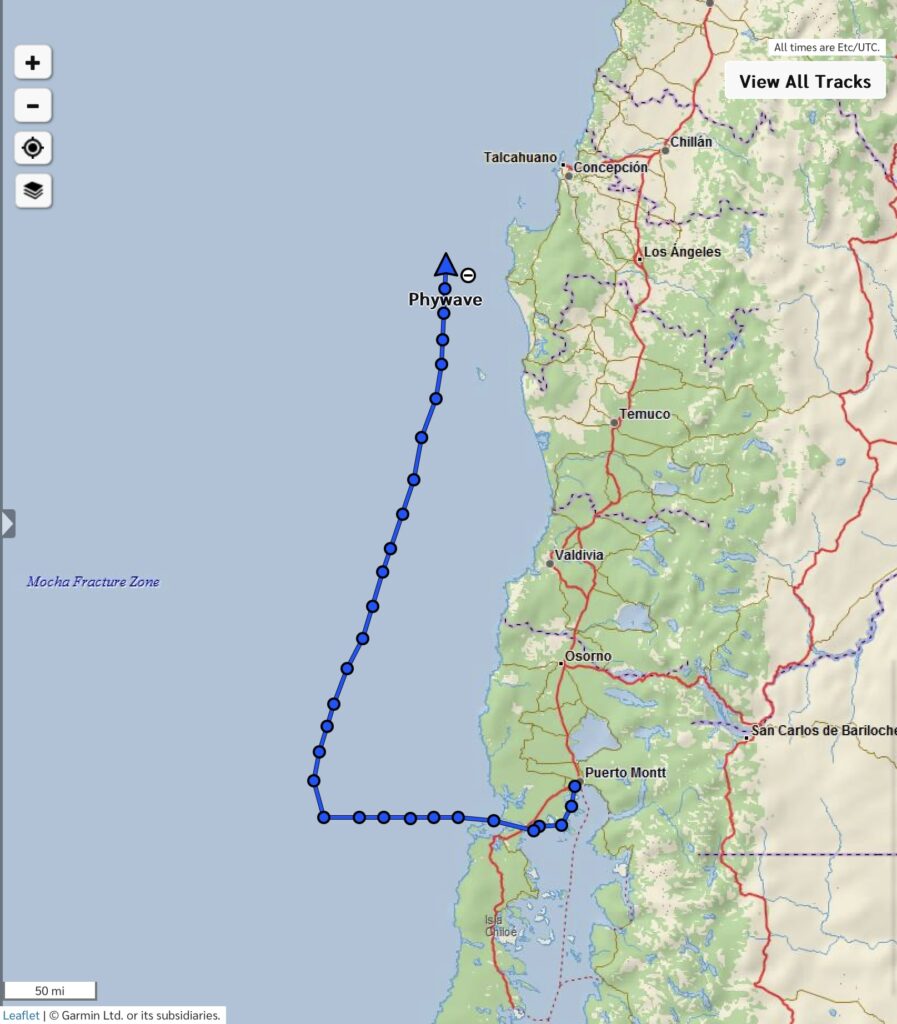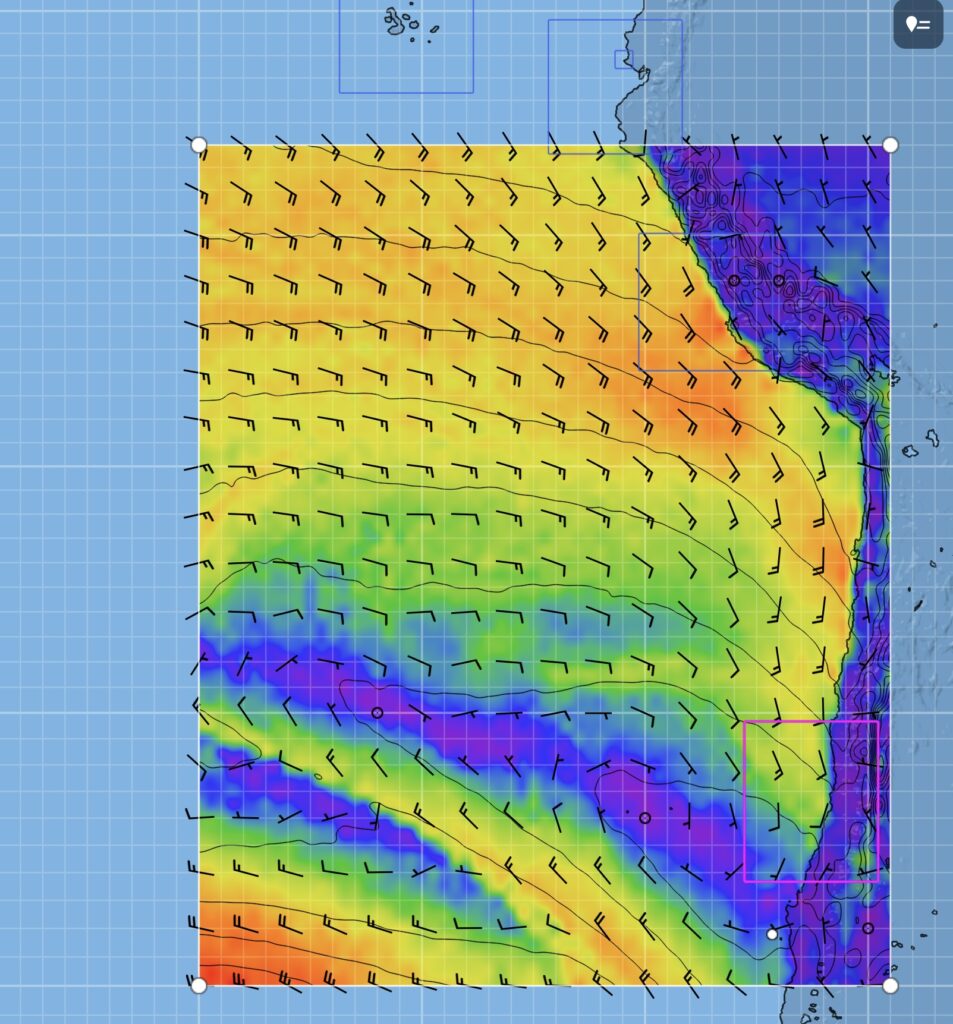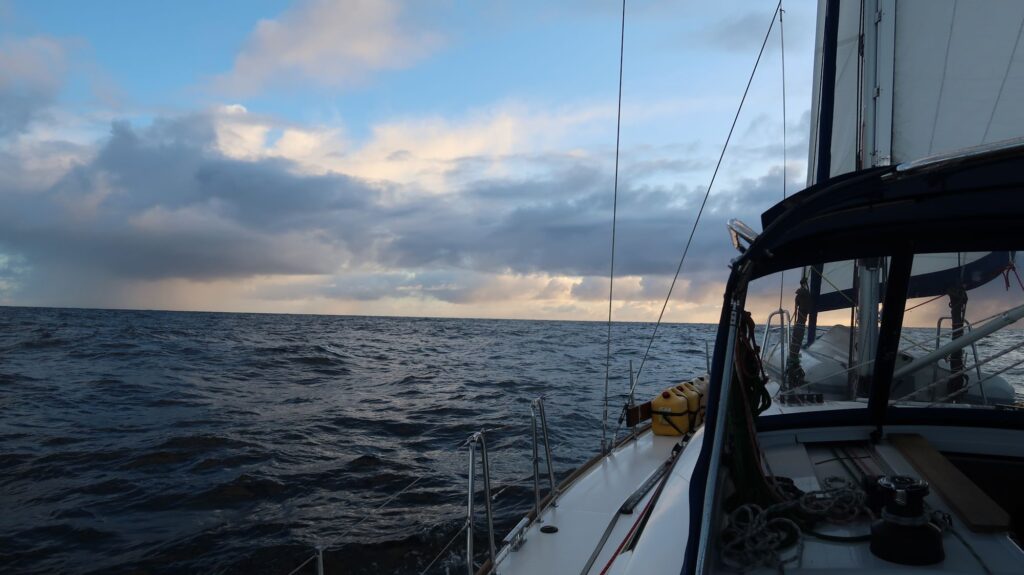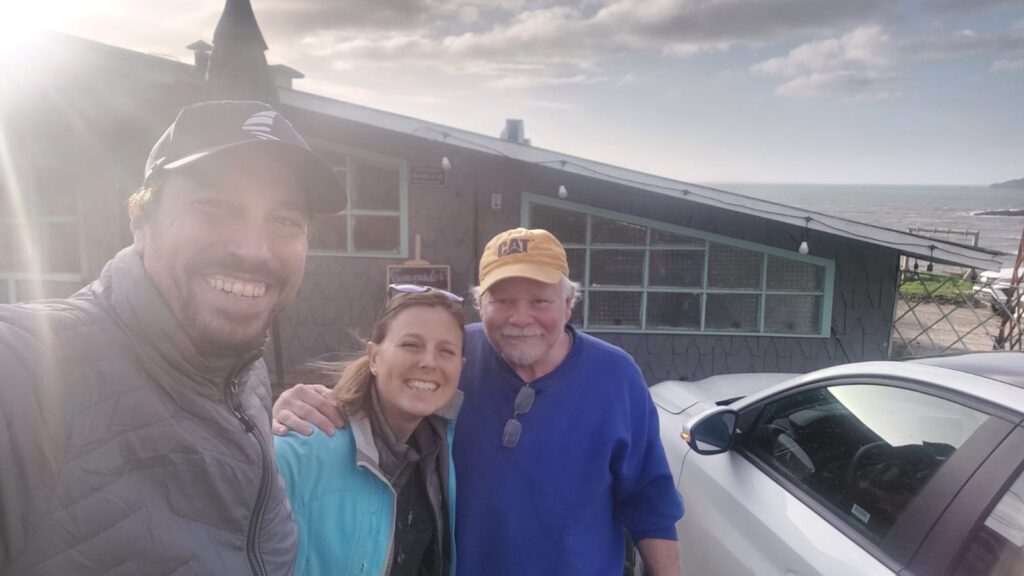I‘m finally underway again, sailing north along the coast of Chile toward the southeast trade winds, a westward flowing river of wind, that will take me across the Pacific toward French Polynesia. I should pick up those winds somewhere around 15-20 degrees south latitude, sometimes farther south.
I’ve changed my intended destination from that shown on my route planning map. I’m going to skip Rapa Nui (Easter Island) since I already spent a week there in 2013 visiting the Moai and other interesting archeological sites. The anchorages there are also renowned for being problematic with no real protected coves or harbors so a boat is exposed to the open sea and rolling swells most of the time. Changing wind directions move from one side of the island to another so that it’s best to move the boat very few days to stay on the lee side.
I’m also skipping Pitcairn Island group (4 islands). Though I’ve never been there it has the same issue with an anchorage that’s open to the sea.
Finally, I’m late getting going on this leg so to get pick up time I’m reducing stops and now sailing to the Gambier Atoll in French Polynesia. The anchorages of this archipelago are in the lagoon inside the outer reef forming the atoll. As the 16th century mariners discovered, it’s a bad idea to sail there directly from southern Chile and risk getting becalmed in the high pressure region that usually dominates that part of the South Pacific. The better strategy is to sail north along the coast of Chile to pick up the trade winds, so named because the early sailing ships followed them to trade with Asia. It’s the long way around, though, so I’m estimating around 4200-4400 nm to Gambier, a passage of 35-40 days, my longest by far. Once in the trade winds it should be pretty smooth downwind sailing with consistent 15-20 knot winds on the stern. One caveat to that is the current climate transition from La Nina to El Nino. In El Nino years the southeast trade winds tend to be weaker and more variable than in La Nina years.
My stay at the Reloncavi marina stretched from my original estimate of 4 weeks to 6.5 weeks. The repairs to my mainsail took longer than expected followed by a week of bad weather offshore I didn’t want to bash into. Even though I wasn’t making progress on my voyage I was comfortable there with a rental car. I also got spend time with some good friends, Curtis and Kate, who I met in Puerto Williams. They are sailing Sweet Ruca, funding their travels with a great YouTube channel called “Sailing Sweet Ruca” with more than 110 episodes so far. They put a lot of time into producing high quality videos of their adventures. They even interviewed me for an upcoming episode because my mission to sail solo to 7 continents is unique and I’m in the same “demographic” as many of their viewers. On one of our excursions we took the ferry across to Chiloe Island for the day just to have a look around and stop for a seafood lunch at a restaurant overlooking the sea near Ancud. Sweet Ruca also will be heading across the Pacific to French Polynesia but not leaving Puerto Montt until August. I may see them again somewhere down the line, not unusual in the cruising community to once again encountered a boat and crew you first met years before.
I’m happy to say my work on the boat, especially cleaning and redoing the antifouling paint, paid good dividends. Motoring at 1750 rpm I now get a boat speed of nearly 6 knots. When I left the boat in Puerto Williams I was getting around 4.5 knots at that power setting. I also think replacing the zinc on the hub of the prop helped. Its cone shape would definitely assist smooth water flow around the prop, improving its efficiency.
I left Reloncavi marina on Thursday morning at first light, around 1200z. The route to the ocean winds around islands through various channels where many floating aquatic farms are found. I’m not sure if they’re for fish or shellfish – mussels, oysters and clams a popular around here. However, they are not lit, or marked on the nautical charts, so unless you’re a local and know where they are it’s treacherous to navigate these channels at night.
I stopped for an overnight anchorage at Puerto Abtao, about 30 nm west of Puerto Montt, to wait for the ebb tide passing through the Chacao Channel. The flood and ebb currents through the channel can be fast, up to 9 nine knots a times, so it’s essential to pass through westward on the ebb tide. Motoring through the channel on Friday evening I enjoyed a speed boost from the ebb current of over 6 knots, a total speed over ground (SOG) of more than 12 knots. Once through the channel I had to work my way west and north around a tight little low pressure system that popped up. Winds around low pressure systems blow clockwise in the Southern Hemisphere.
Now it’s just a matter of sailing north for the next few days and getting into the trade winds as soon as possible. At least the weather has been better than Puerto Montt where it was rainy, cold and windy much of the time, maybe one nice day per week. It is winter here. I’ve been sailing under mostly clear skies so far, a welcome change I hope continues. I was up early today to adjust sails. The stars and moon are brilliant against the deep darkness of the open ocean at night, my old friend the constellation Orion hanging upside down over the eastern horizon waiting for the coming orange glow hints of an emerging dawn. I think it’s going to be a good day.



